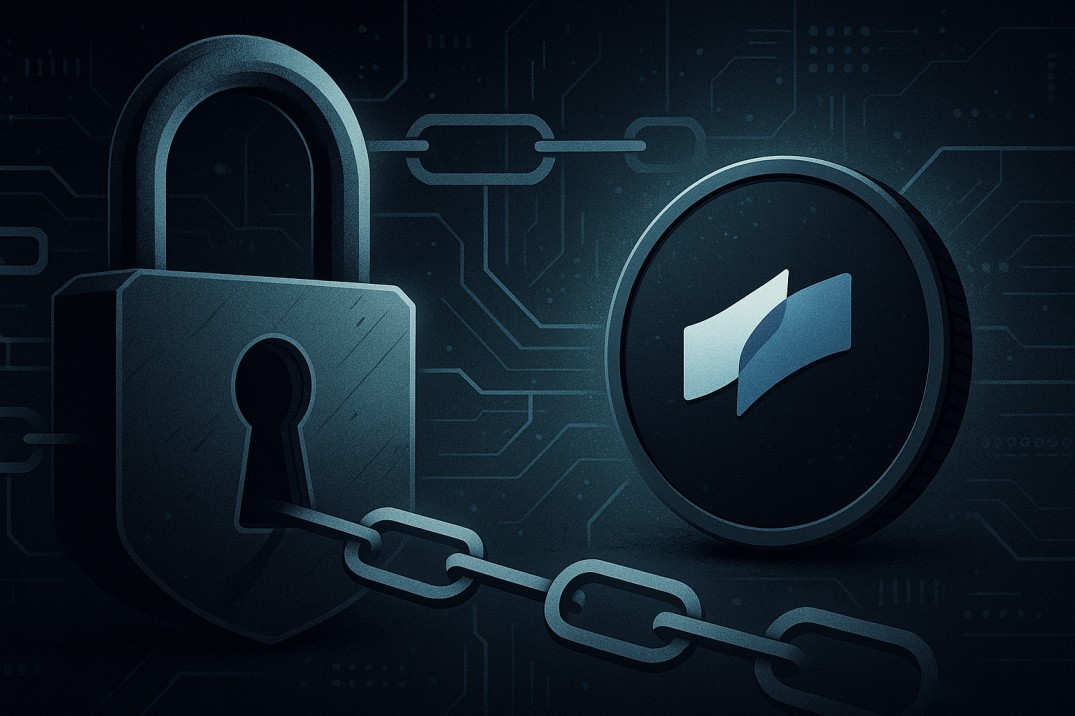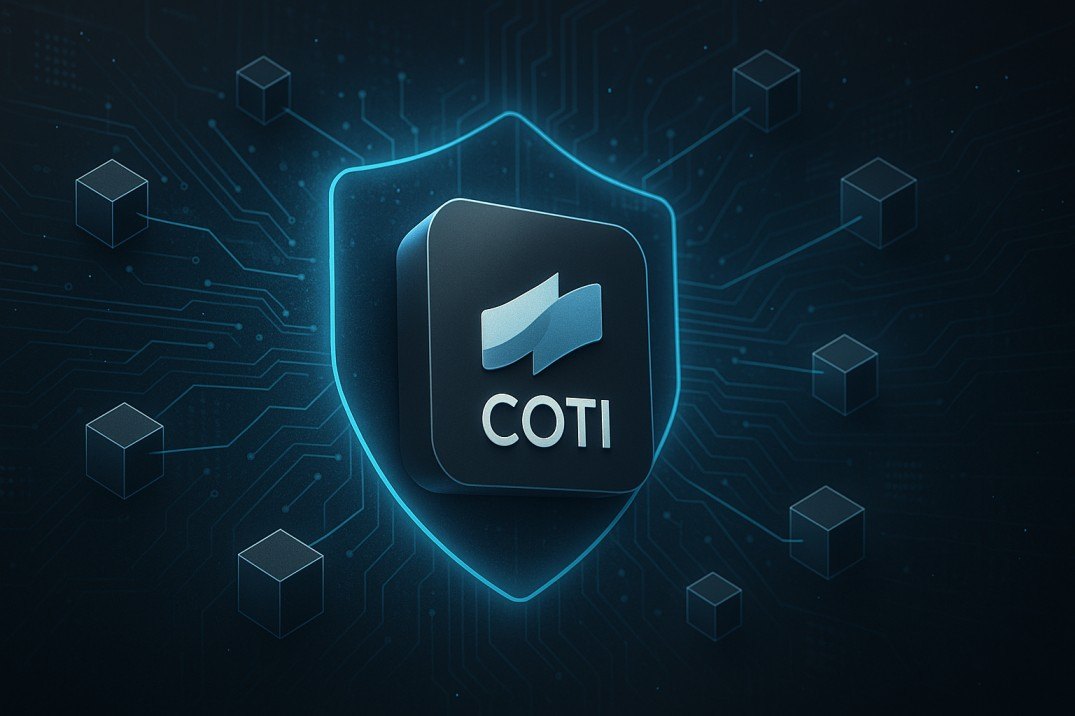TL;DR
- COTI rebuilt blockchain trust from the ground up using Garbled Circuits (GC) - a privacy-first computation model once limited to academia.
- It enables selective disclosure, letting users decide what data to share and with whom.
- COTI's system performs thousands of times faster than existing alternatives (source).
- Unlike other privacy coins, COTI's approach aligns with regulatory transparency - not secrecy.
- As the crypto industry shifts toward compliance and confidentiality, COTI's decentralized confidential computing (DeCC) layer could define the next chapter of Web3.
Every blockchain project starts with the same promise - trustless transactions. But in reality, "trustless" doesn't mean trust-free. It just means trust is outsourced - to code, validators, and cryptographic math.
The problem? Trust on blockchains has always been too visible. Every transaction, every address, every movement - permanent and public. Transparency became surveillance.
And so, the pendulum swung the other way. Privacy coins like Monero and Zcash emerged, hiding everything. But regulators saw them as blind spots, leading to delistings and bans.The world needed something in between - not total secrecy, not total exposure.Something that could prove without revealing. That's where COTI stepped in.
From Payment Rails to Privacy Rails
COTI began years ago as a payment network - an experiment in scalable digital trust. But as the crypto landscape evolved, one truth became clear: the next era of blockchain isn't about speed; it's about privacy with proof.
Instead of optimizing for throughput, COTI shifted its core research into cryptographic computation - a field focused on performing calculations on encrypted data without ever revealing the inputs. At the heart of that transformation lies Garbled Circuits (GC) - a concept first proposed in the 1980s but considered too heavy for real-world use. COTI turned that theory into something usable at blockchain scale.
Reinventing Trust with Garbled Circuits

In simple terms, Garbled Circuits let two or more parties compute a function together - without revealing their private data to each other. Think of it as a locked box containing logic. Each participant holds a unique key, but only the right combination opens the path to the correct result.
As COTI described in their research paper:
This is more than performance - it's a new architecture for trust. Instead of asking users to trust validators or exchanges, COTI's system allows verifiable proof of correctness for every computation. Every on-chain action can be verified mathematically without revealing private data.
"Selective Disclosure" - The Real Revolution
Most privacy coins treat information as binary - either public or hidden. COTI doesn't.
As CEO Shahaf Bar-Geffen told CryptoNews:
That single line changes everything. It means compliance can co-exist with confidentiality. Banks, institutions, or dApps can interact with private data without owning it. Users remain the gatekeepers of their digital identity, deciding what gets revealed for audits, KYC checks, or verifications.
This selective disclosure is the missing middle ground - and it's exactly what the crypto world needed to mature.
Why Other Privacy Coins Hit a Wall
Projects like Monero, Zcash, and Secret Network made strong cases for financial privacy. But they hit the same barrier - opacity equals risk in the eyes of regulators. Governments can't allow systems that completely obscure transactions. And exchanges won't list coins that regulators might flag. Even promising networks like Secret Network faced technical and security concerns that eroded community trust.
COTI took the opposite approach: don't hide everything - control what's visible. Instead of fighting transparency, COTI redefines it - by making it permissioned, provable, and user-driven. That's how blockchain regains trust - not by going dark, but by giving control back to the individual. In most chains, privacy is a layer or plugin - optional, often added later. In COTI V2, privacy is the foundation. Everything runs through confidential computing. From token transfers to dApp logic, all computations can occur privately and verifiably.
This is where Garbled Circuits shine:
- No need to trust validators - they can't see raw data.
- No data leaks - inputs and outputs are encrypted.
- Audit-ready - computations can still be verified by external parties.
It's not just about protecting transactions - it's about rebuilding the integrity layer of the internet.
The Shift Toward Decentralized Confidential Computing

What COTI calls "DeCC" - Decentralized Confidential Computing - is a term you'll likely hear more in coming years.
It's a direct evolution of what zero-knowledge proofs (ZKPs) started. But while ZKPs prove a statement is true without showing details, DeCC lets you run full computations in private, not just proofs. This means smart contracts, machine learning, and even on-chain AI could eventually operate within this framework - verifiable, private, and censorship-resistant.
COTI isn't just following the privacy trend. It's building the infrastructure for the next generation of applications - ones that need both trust and discretion.
Benchmarking the Breakthrough
In confidential computing, speed is everything. And COTI's benchmarks show what's possible when optimization meets real-world design.
In their study, COTI's engineers demonstrated that their implementation of Garbled Circuits executes thousands of times faster than academic models (source). Basic computations that used to take seconds now complete in microseconds. This matters because privacy has always been the trade-off - more security meant slower transactions. COTI removed that compromise entirely.
By solving the performance bottleneck, COTI opened the door for real-world confidential dApps to exist - not just experiments.
How COTI Differs from ZK Projects
It's easy to confuse COTI with zero-knowledge (ZK) systems like zkSync or Aztec. But the two technologies operate differently.
ZK proofs validate a statement - for example, "I have enough tokens" - without revealing your balance.
Garbled Circuits, on the other hand, execute full functions - "Let's calculate a result together without exposing inputs."
Where ZK excels at verification, GC excels at computation. That makes COTI's DeCC layer uniquely capable of powering complex use cases - private lending, encrypted AI, or confidential DAO voting.
It's a broader canvas for what private computation can mean on-chain. That's what makes its vision resonate in a world where data ownership is being redefined daily. You control your data. You decide who sees what. And for the first time in blockchain's history, that choice is enforceable by cryptography - not trust.
Building the Trust Layer for Web3
The term "trust layer" isn't marketing. It's infrastructure. For Web3 to evolve beyond speculation, applications need a reliable way to handle private data while maintaining auditability. COTI's Garbled Circuits system does just that. It's a trust framework for the entire blockchain ecosystem - one that integrates with existing L1s and L2s, extending privacy as a service rather than a competing chain.
In other words, COTI isn't asking developers to migrate - it's giving them a plug-in trust engine that can secure their computations natively.
The Bigger Picture: Why the Industry Needs COTI
The crypto world has reached a crossroads. Scalability has been solved, liquidity is abundant, but trust - the very foundation - is fractured. Users don't trust centralized exchanges. Institutions don't trust anonymous protocols. And regulators don't trust opaque systems.
COTI bridges all three. It proves that privacy doesn't have to mean secrecy - and compliance doesn't have to mean surveillance. That's not just innovation - it's balance. And balance is what the blockchain industry has been chasing since day one. It's not just faster or cheaper - it's philosophically aligned with where the digital world is heading:
- Transparent systems that respect privacy.
- Regulators that verify without prying.
- Users who own their data.
As confidential computing becomes the new frontier, COTI is positioned as the invisible trust layer every chain will need. And that might be the most powerful position of all.
Final Thoughts
Trust has always been blockchain's biggest paradox - it promises to eliminate it while depending on it. COTI didn't solve that paradox by removing trust; it redefined it through mathematics, privacy, and proof.
In the next decade, as Web3 matures, every serious application will need a way to prove integrity without giving up privacy. COTI's Garbled Circuits technology makes that possible - efficiently, transparently, and responsibly. And that's how COTI quietly reinvented trust on the blockchain.
ALSO READ: 5 Crazy Ideas That Could Be Built on COTI (But No One Has Yet)











